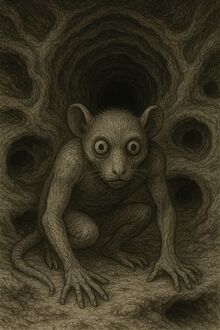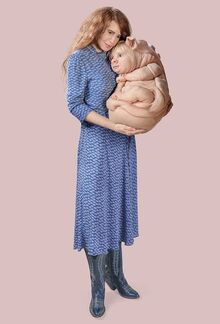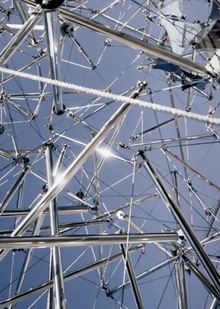
Photorealistic background technology in manga: 3D, CGI, photo
Concept

Akira (1982), Katsuhiro Otomo
Manga, a Japanese form of comics and graphic novels, became popular because of its unique style and interesting stories. But behind the seemingly simple picture is a tremendous amount of work and skill, especially when it comes to the creation of the background. The background plays an important role in manga by adding depth, atmosphere, and the mood and context of history. Recently, many manga artists have begun to use modern technologies such as 3D modelling, computer graphics (CGI) and photo processing to make their work more realistic. This visual study affects various methods of creating photorealistic background in manga. It will consider how artists use 3D simulations to create complex architectural structures, CGI to add textures and lighting, and the processing of photos to integrate real images into manga. These technologies not only facilitate the creation of the background, but also create new creative opportunities, allowing artists to experiment with different styles and create more convincing and exciting works.

Scratch, draft drawing, and the pages of the manga of Nomur Tadashi
Before going deeper into modern techniques, it is important to understand how the technology for the construction of the manga has evolved. In the early years, the Mangaki relied exclusively on traditional painting methods, using feathers, ink and watermelon to create detailed scenes. Each background was painted manually, which took a great deal of time and required a high degree of skill. However, with the development of digital technologies and the emergence of specialized software, the background process has become much simpler and more flexible. The transition from traditional methods to digital methods began in the 1990s, when computers and software became more accessible. This allowed the Mangacs to experiment with new techniques and introduce elements of photorealism into their works. One of the first mangacs to actively use digital technology was Katsuhiro Otomo, author of the famous Akira. His work has shown that the use of computers can not only accelerate the manga process, but also open up new artistic opportunities.
Akira (1982), Katsuhiro Otomo
Akira (1982), Katsuhiro Otomo
3D Modelling: Structure and depth
Three-dimensional simulations have become one of the most popular methods of creating photo-realistic background in manga. With programs such as Blender, Sketchup and Clip Studio Paint, the Mangaki create three-dimensional models of buildings, interiors, and even whole cities. These models become the basis for drawing the background, thus greatly accelerating the process and achieving a high level of detail.
Gantz (2000), Hiroya Oku
Hiroya Oku, author of the manga «Gantz» and «Inuyashiki», uses three-dimensional simulations to develop futuristic objects and urban landscapes, making his works recognized by unique visual style.
Gantz (2000), Hiroya Oku. In Gantz, Hiroya Oku talks about his process of manga creation.
When the heads of the manga are created, Oku starts with the sketches of the pages. He then creates three-dimensional models of characters and background on his computer. After completing the work, Oku prints out three-dimensional versions of characters and background, puts shades and colors on the pages, and adds sound effects and dialogues.
Gantz (2000), Hiroya Oku
Oku has already applied this style in Zero One, but for this manga there wasn’t enough hand-painting, so he decided to add more hand-paints to make Ganz more realistic and cost-effective. However, Oku acknowledges that such an approach takes a long time and has to work quickly to meet the deadlines.
Death Note (2003), Takashi Obata
Takashi Obata, a famous contemporary manga author, is also a good example of how digital technologies contribute to the creation of photo-realistic background. In his work, including «Death Note» and «Bakuman», Obata is able to combine classical painting techniques with the latest digital tools.
Death Note (2003), Takashi Obata. Urban landscapes
«Death Note» focuses on urban landscapes and interiors. Takashi Obata uses 3D simulations to create complex architectural scenes. For example, in an episode where Light Yagami’s main hero moves around town, you can see the amazing detailing of buildings and streets. These elements not only make history more realistic, but also reinforce a sense of tension and drama.
Death Note (2003), Takashi Obata. Interiors
In his interview, Obata said that it would take too much time and effort to develop such scenes manually. With the use of three-dimensional models, it can quickly create the background, which then improves manually to achieve the required degree of detail and atmosphere.
CGI: Adding Textures and Lighting
CGI (computer-generated image) is a process of using computer technology to create or improve visual elements in a work. In manga, computer graphics are often used to add parts such as textures and lighting that are difficult or impossible to draw manually.
Blame! (1996), Tsutoma Nihey
Tsutomu Nihei, author of popular mang «Blame!» and «Knights of Sidonia», was one of the first to use CGI to create photo-realistic background. In his work, he actively uses computer technology to create complex and detailed scenes.
Blame! (1996), Tsutoma Nihey
In the manga «Blame!», computer graphics (CGI) are used to create dark and industrial decorations that highlight the post-apocalyptic atmosphere of history. Tutomu Nihei uses CGI to develop complex architectural structures and geometric forms that are then integrated into his work. This allows it to create scenes with an incredible degree of detail and depth that is not possible with the use of traditional methods.
Photo processing: Integration of reality
The use of photos as a background is a way for mangakis to become photoreal. It consists of photographing the real places and then processing the images for addition to the work. Photographs can be changed, supplemented or repainted to match the style and atmosphere of history.
Example of the processing and fine-tuning of photographs of Asano
Good night, Punpoon (2007), Inio Asano
Inio Asano, who created the manga «Goodnight Punpun», is known for his approach to the use of photos as a background. In his work, he takes pictures of real places and processes them with specialized software so that they are in harmony with the manga’s common stylist. As a result, it creates very detailed and realistic scenes that increase the emotional impact of its works.
Good night, Punpoon (2007), Inio Asano
In addition to integrating photographs, Asano also actively uses 3D and CGI in his work.
Inio Asano uses Unreal Engineering to create a 3D CG school-class model for Dead Dead Demonde Destruction
Asano took the computer graphics to a new level in Mujina into the Deep, creating a detailed urban landscape of one square kilometre.
The effect of photorealism on genres and audiences
Photo-realistic backgrounds have a significant impact on manga genres, helping to create unique visual and emotional effects that enhance reader perception.
Naoki Urasawa in Monster (1994) uses realistic scenes of cities and interiors to create a sense of reality that increases feelings of horror and tension
Twilight Nihey in Blame! (1995) uses dark industrial landscapes created by CGI to create an atmosphere of despair and horror.
In the triller’s genres and horror, photorealistic background plays a key role in creating an atmosphere of tension and fear.
Hiroya Oku in Inuyashiki (2014) is actively using CGI and 3D simulations to create futuristic cities and technologies.
Science fiction often requires complex and detailed worlds that cannot be replicated manually.
In Goodnight Punpun (2007), Asano uses realistic urban landscapes to create a contrast between the external reality and the inner experiences of characters, increasing their emotional impact
Photorealism in manga also has a significant impact on the psychological and emotional perception of the work. Realistic background helps create more convincing and emotionally rich scenes that allow the reader to sink deeper into history and experience it with characters. Such scenes can increase the emotional impact by making the events and experiences of characters more tangible and real.
Conclusion
Photo-realistic background has become an important part of modern manga by using CGI, 3D modelling and photo processing. These technologies allow artists to create more complex and detailed scenes, saving time and energy. The work of authors such as Hiroya Oku, Takashi Obata, Inio Asano and Tsutu Nihei demonstrates how different technologies can be used to achieve photorealism and how they affect the perception of manga by readers. The application of these technologies offers new opportunities for artists to experiment with different styles and techniques. However, this requires specialized software and digital tools skills.
Benzopel Man, Tatsuki Fujimoto, 2018
As a result, the photo-realistic background not only enriches the manga’s visual language, but also contributes to the creation of more convincing and exciting works that continue to admire and inspire readers around the world. Further development of these technologies and their integration into the manga process can be expected in the future, opening new horizons for artists and enabling them to create even more impressive and realistic scenes.
13 of the Best Manga Artists that made History 2021. — URL: https://www.domestika.org/en/blog/6034-13-of-the-best-manga-artists-th-made-history (at 26.05.24) 2 CGWORLD vol. 303 2023 [Electrical Resource]. — URL: https://cgworld.jp/magazine/cgw303.html (discussed 26.05.24) 3. Artists Embraced 3D CG tools to create manga. — URL: https://news.animenomics.com/p/manga-artists-embrace-advanced-3d-cg-tools (communication date 26.05.24) 4. Daryl Harding INTERVIEW: Gantzås Hiroya Oku On Creating the Outstanding GIGANT 2021 [Electric Resource]. — URL: https://www.crunchiroll.com/news/interviews/2021/8/11/interview-gantzs-hiroya-oku-on-creating-the-outstanding-gigant (communication date 26.05.24) 5 Manga artist Inio Asano creations real-time backdrops in Unreal Energy 2020. — URL: https://www.unrealengine.com/en-US/spotlights/manga-artist-inio-asano-creates-real-time-backdrops-in-unreal-engine (communication date 26.05.24) 6 Artem Korshikov as RUSSIAN 2021 [Electronic Resource]. — URL: https://shikimori.one/collections/12800-3d-cgi-v-mange (communication 26.05.24) 7. https://dzen.ru/a/X_HCf5OaG9q1B5N (communication 29.05.24)
https://seimanga.me/bleim (27.05.2024) 2 2. https://mangalib.me/akira (27.05.2024) 3. https://seimanga.me/ganc (27.05.2024) 4. https://1xxmanga.ru/comics/405-blame (Date 28.05.2024) 5. https://mangalib.me/inuashiki (Date 29.05.2024) 6. https://readmanga.live/monstr_1994 (Date 29.05.2024) 7. https://mangalib.me/oyasumi-pun(Date of address 29.05.ddddeb) 8.



